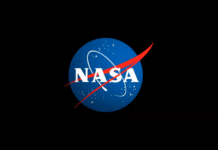Unveiling Neptune’s Auroras: A Breakthrough Discovery by the James Webb Space Telescope
In a groundbreaking achievement, NASA’s James Webb Space Telescope has successfully captured vibrant auroral activity on Neptune for the first time. This marks a significant milestone in space exploration, as auroras on Neptune have eluded astronomers for decades. Auroras, which are luminous displays in a planet’s atmosphere, occur when energetic particles, often from the Sun, become trapped in a planet’s magnetic field and collide with the upper atmosphere, releasing visible energy in the form of light.
Previously, hints of such auroral activity on Neptune were observed during NASA’s Voyager 2 flyby in 1989. Despite successful auroral detections on other gas giants like Jupiter, Saturn, and Uranus, Neptune remained a mystery in this regard. With the recent observations, Neptune completes the puzzle of understanding auroras across the giant planets of our solar system.
According to lead researcher Henrik Melin of Northumbria University, the imaging of Neptune’s auroras was made possible due to the Webb telescope’s near-infrared sensitivity. Melin, who conducted the research while at the University of Leicester, expressed astonishment at the clarity and detail of the auroras captured. The data, obtained in June 2023 using Webb’s Near-Infrared Spectrograph, also provided a spectrum to assess the composition and temperature of Neptune’s ionosphere, the layer of the atmosphere where auroras occur.
For the first time, a prominent emission line indicating the presence of the trihydrogen cation (H3+) was detected on Neptune, similar to other gas giants. H3+ is a crucial marker of auroral activity, previously observed on Jupiter, Saturn, and Uranus. Heidi Hammel, an interdisciplinary scientist with the Association of Universities for Research in Astronomy, noted that the confirmation of H3+ on Neptune was only possible with the advanced capabilities of the Webb telescope.
A unique aspect of Neptune’s auroras is their location. Unlike Earth, Jupiter, or Saturn, where auroras are typically seen near the poles, Neptune’s auroras occur at mid-latitudes, akin to the geographical region where South America is located on Earth. This unusual positioning is due to Neptune’s magnetic field, discovered by Voyager 2, which is tilted by 47 degrees from the planet’s rotational axis. The magnetic field’s configuration causes the auroras to appear far from Neptune’s rotational poles.
The discovery of Neptune’s auroras opens a new window into understanding the planet’s magnetic field and its interaction with solar particles. This insight could enhance our comprehension of ice giant atmospheric science and the dynamics of magnetic fields in the solar system’s outer reaches.
In addition to capturing the auroras, the Webb telescope’s observations allowed scientists to measure Neptune’s atmospheric temperature for the first time since the Voyager 2 mission. It was found that Neptune’s upper atmosphere has cooled by several hundred degrees since 1989. This significant temperature drop likely contributed to the auroras’ elusive nature, as cooler temperatures result in fainter auroras. The discovery suggests that Neptune’s atmospheric conditions can vary greatly, despite the planet’s distant location from the Sun, over 30 times farther than Earth.
With these new findings, astronomers are eager to study Neptune throughout a complete solar cycle, which spans 11 years and is driven by the Sun’s magnetic field. This extended observation could unravel the origins of Neptune’s peculiar magnetic field and further explain its tilt. Leigh Fletcher of Leicester University, a co-author of the research paper, emphasized the importance of having instruments capable of detecting infrared light to study auroras in future missions to Uranus and Neptune.
These observations were part of the Guaranteed Time Observation program, with results published in Nature Astronomy. The James Webb Space Telescope, a collaboration between NASA, ESA (European Space Agency), and CSA (Canadian Space Agency), continues to revolutionize our understanding of the universe. It is not only solving mysteries within our solar system but also exploring distant worlds and investigating the origins of the universe and our place within it.
For those interested in further exploring this topic, the Space Telescope Science Institute offers additional resources and images related to the Webb telescope’s observations of Neptune. Readers can delve into a visualization of Neptune’s tilted magnetic axis, learn more about Neptune and the solar system, and access a variety of Webb telescope images and news updates.
In summary, the James Webb Space Telescope’s ability to capture Neptune’s auroras represents a significant leap forward in planetary science and our understanding of the solar system’s outer giants. This achievement highlights the importance of continued space exploration and the potential for future discoveries that can reshape our knowledge of the cosmos.
For more Information, Refer to this article.


































